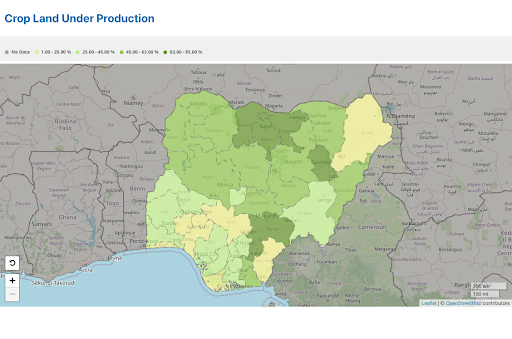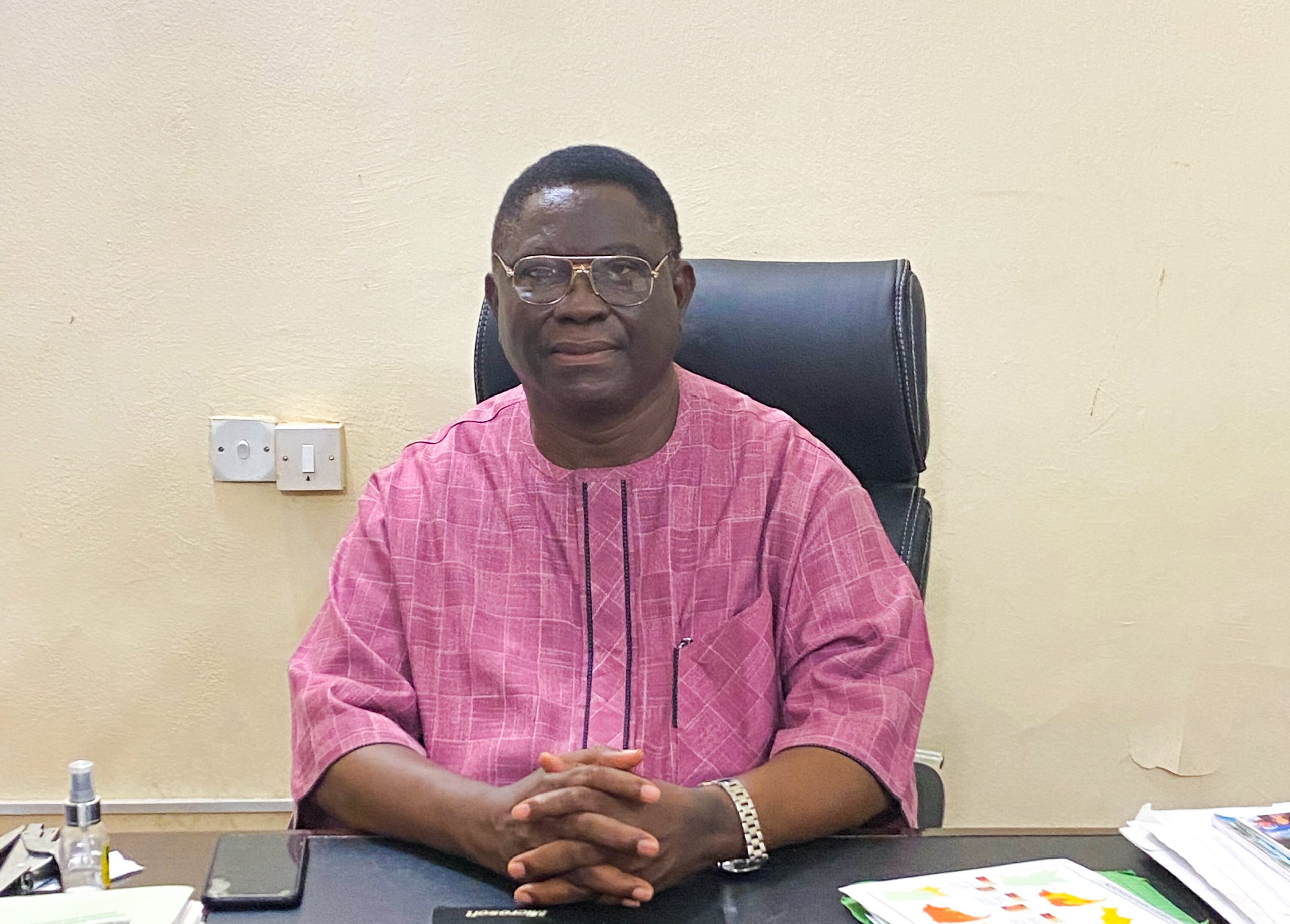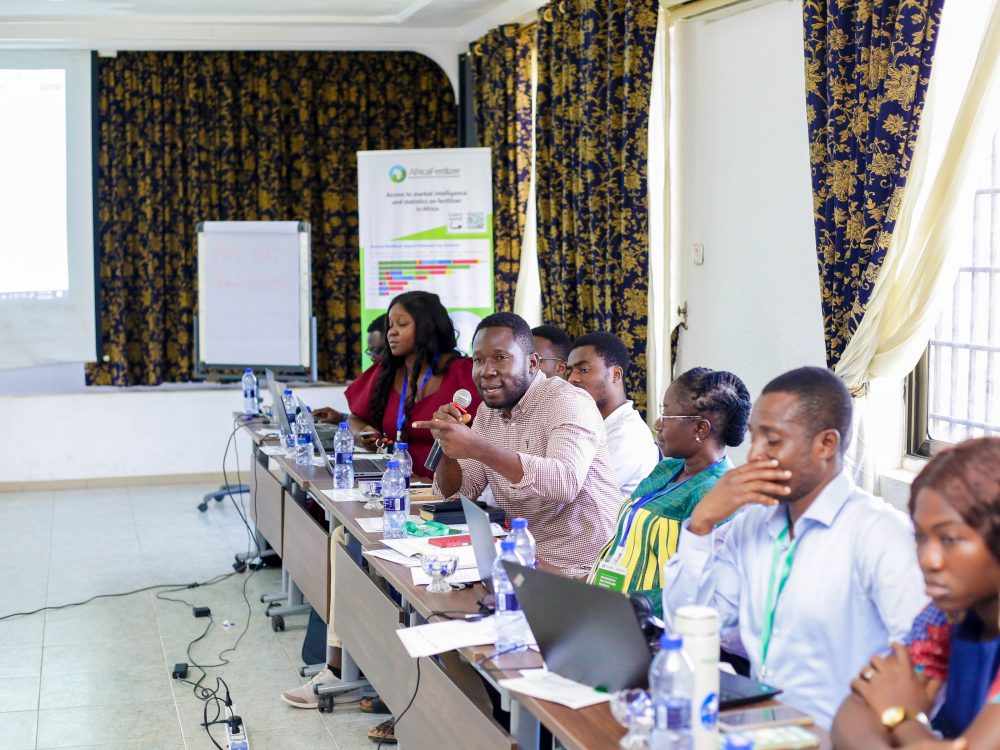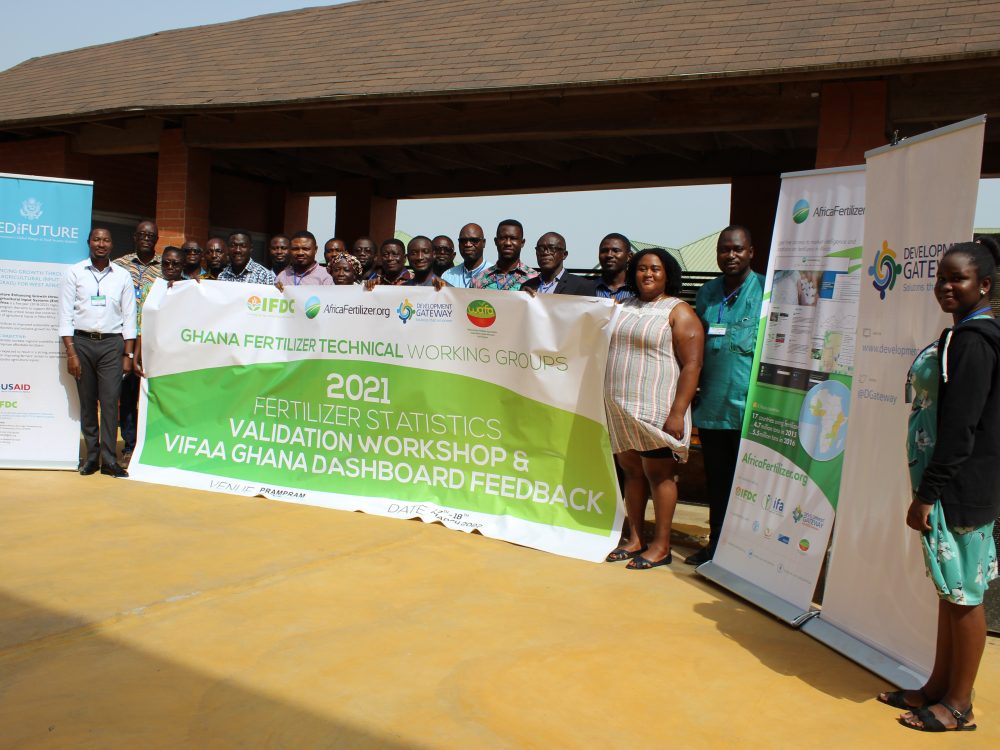
Decision-Making: from Soil to Farmers
Through the Visualizing Insights on Fertilizer for African Agriculture (VIFAA) Program, Development Gateway – and partners International Fertilizer Development Center (IFDC) and AfricaFertlizer.org – aim to fill key fertilizer information gaps, increase data-driven policy and investment decisions in the fertilizer sector, and develop comprehensive, user-centered fertilizer data dashboards. The goal is to support development partners and the private sector to respond efficiently and effectively to changes in the fertilizer market, ensuring that sufficient quantities and appropriate fertilizers reach farmers at the right time for planting.
Crop Yields and Food Security

There are 17 nutrients required for plant growth with (N) nitrogen, (P) phosphorus, and (K) potassium serving as the essential trio. In Nigeria, there is a drive to produce and use more region and crop-specific fertilizers in an effort to increase crop yields and food security. Professor Victor Okechukwu Chude is the Registrar/CEO of Nigeria Institute of Soil Science (NISS), where his work centers on these issues. His passion for agriculture is derived from working with his grandfather on the family’s farm; and has been driven by the desire to produce food for his family and for the rest of Nigeria. In his role, Professor Chude focuses on soil fertility, plant nutrition, and promoting the sustainable management of Nigerian soils. NISS sees soil science as a way to ensure environmental sustainability, high agricultural productivity, and food security in the country.
Unreliable Data
Professor Chude explained that sourcing data in Nigeria can be a herculean task. He often relies on data derived from student works and research, FAO Stats, and internet research. “It’s tough… students know that their degree is dependant on reliable data, but some of the data that is out there is not reliable.”
For Professor Chude, another consideration is producing data and analysis that can be understood by the end-users, often agricultural extension agents or farmers. Using raw data can be a challenge, specifically when working with constituents with lower data literacy. “Data sometimes looks so complicated, you wonder where to start and how [to] figure it out.”
Integrating Visuals and Analysis
The VIFAA Nigeria Dashboard was co-designed by Development Gateway and AfricaFertilizer.org (a project of IFDC), in conjunction with stakeholders like Professor Chude and NISS. Built on trusted data validated by Nigeria’s Fertilizer Working Group, the dashboard displays fourteen indicators including apparent consumption, price, availability, and a searchable plant directory. Additionally, this information has been overlaid on the cropland under production map, which is the first cropland mapping in Nigeria since 1973.
In encouraging farmers to use fertilizer, Professor Chude described the need for information on the prices of various products, fertilizer use, fertilizer availability, and crop-specific fertilizers. This information feeds into decision-making at NISS and at the regional or individual levels.
Transforming Decision-Making
Professor Chude describes the dashboard in terms of improvement to efficiency. First, because much of the analysis has already been done and is being visualized on the dashboard, which saves significant staff time and reduces calculation errors. It also improves the ease of doing business through increased knowledge. The dashboard also reduces barriers to collaboration for partners by increasing the compatibility of the data.
He also sees the benefit to farmers questioning which products to use. The dashboard is highly visual. It shows the value of fertilizer and how it can impact a farmer’s income. Extension agents, who are already trusted by the farmers, can explain the benefits and leave easy-to-understand data visualizations with the farmers, which can “become very impactful.”
Overall, Professor Chude sees the value in the way data has been transformed on the dashboard. It increases his ability to make decisions and scale specific projects. “This [dashboard] is highly commendable. It is easy to use and contains a lot of useful and helpful data. it will enhance our work as soil scientists and extension agents in making recommendations.”
VIFAA Going Forward
In November 2022, AfricaFertilizer (AFO), our partner on the Visualizing Insights on Fertilizer for African Agriculture (VIFAA) program, rebranded and launched a new website. This website includes the integration of country-specific VIFAA dashboards, which were previously housed in separate websites. By integrating the country-specific dashboards as well as fertilizer data on trade, production, consumption, and retail prices for 18 countries in sub-Saharan Africa, the new AFO data allows easier comparative analysis across countries and contributes its quota to the advancement of food security throughout Africa.
We have updated the previous country-specific dashboards links to now redirect you to AFO’s new website in order to ensure you are accessing the most up-to-date resources.
Share
Related Posts

From Data Gaps to Impact: Key Insights from the VIFAA Program
Over the last six years, DG, together with its partners AfricaFertilizer (AFO) and Wallace & Associates, collaborated to implement the Visualizing Insights on Fertilizer for African Agriculture (VIFAA) Program. In the program’s final year (2024), the team undertook a “program learning process” to reflect on outcomes, challenges, and successes through internal interviews. This blog captures five key learnings, which we hope will guide similar programs aiming to bridge data gaps in agricultural development.

Case Study: Fostering Sustainable Agriculture through Data-Driven Collaboration and Partnership: Ethiopia, Mozambique, and Nigeria
Through DG’s Visualizing Insights on Fertilizer for African Agriculture (VIFAA) program, we recently published a case study titled “Fostering Sustainable Agriculture through Data-Driven Collaboration and Partnership: Ethiopia, Mozambique, and Nigeria.” It dives deep into how the VIFAA program has impacted the fertilizer data and markets in Ethiopia, Mozambique, and Nigeria. In this blog, we explore the overall impact that the VIFAA program is making, why the program was needed, and offer some key highlights from the case study.

Fertilizer Technical Working Groups Provide Key Insights into Africa’s Fertilizer Sector
From June 2021 to September 2022, Development Gateway: An IREX Venture’s (DG’s) Visualizing Insights on Fertilizer for African Agriculture (VIFAA) program convened 12 Fertilizer Technical Working Groups in 14 countries which have yielded essential information on Africa’s fertilizer sector, including insights on how geopolitical events have impacted the fertilizer sector and what is needed to mitigate resulting threats to food security throughout Africa.